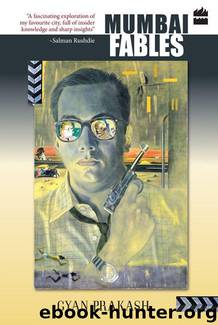MUMBAI FABLES by Prakash Gyan

Author:Prakash, Gyan [Prakash, Gyan]
Language: eng
Format: azw3
Tags: Non-fiction
Publisher: Harper Colllins
Published: 2013-01-15T16:00:00+00:00
DREAMING RED
A collective identity forged from the neighborhood ties of village, caste, and kin did not automatically translate into a proletarian mobilization against capital. It was one thing to find workers bound together through shared cultural and social conditions, but quite another to mobilize them as a revolutionary force for socialism. This was the challenge that the Communists faced when they began their activities in Girangaon in the 1920s.
Although the Communist Party of India was founded in 1920 at Tashkent under the direction of the Comintern, the first conclave of Communist activists in India took place in Kanpur in December 1925. Out of this conference came the Workers and Peasants Party, the name of the Communist Party at that time. Absent from the conference was S. A. Dange, one of the leading Communists. Born in 1899 to a Maharashtrian Brahmin family, Dange had started his political career as a follower of the nationalist leader Tilak. But like several other nationalists of his generation, he gravitated to Marxism after the Bolshevik Revolution. In 1921 Dange published a pamphlet, Gandhi vs. Lenin, reflecting his conversion to revolutionary politics. A year later, he started an English journal called the Socialist with the help of a sympathetic flour-mill owner.10 Strikes by workers drew him to Girangaon, where he began spreading Marxist ideas among labor activists. The British took note of his Communist activities and threw him into prison in 1924, charging him with conspiracy to overthrow his majesty’s government.
At that time, the principal trade union was the All India Trade Union Congress (AITUC). Founded in 1920 by Congress leaders, the AITUC was by no means a revolutionary organization. Nor was the Girni Kamgar Mahamandal, the main trade union founded by mill clerks and jobbers during the 1924 general strike. The opportunity for the Communists came in 1927.11 The mill owners introduced “rationalization” schemes, developed by Henry Ford in the United States and admired by businessmen and efficiency experts throughout the world. As elsewhere, rationalization raised the workload and created fears of unemployment and lower wages. The workers became restive.
The protest began at Sassoon Mills, one of the largest and most advanced manufacturing units.12 Soon, the workers struck in mill after mill. As industrial action spread to the industry as a whole and spilled into the public sphere of the street and the neighborhood, the Marxist anticapitalist ideology provided the workers with a robust rallying point. Unlike the established labor leadership, which had particular neighborhood and political connections to defend, the Communists were unconstrained; they championed a general strike for larger political reasons. Dange, who had just been released from jail in 1927 after serving three years for his conviction in the “Bolshevik Conspiracy” case, returned to Bombay and plunged into labor activism.13 While the established labor leaders wavered, Dange and his comrades pressed for a general strike.
A police firing on a workers’ procession added fuel to fire. Inflamed by the shooting, which felled one of their comrades, the mill workers went on a general strike in 1928 that lasted for six months.
Download
This site does not store any files on its server. We only index and link to content provided by other sites. Please contact the content providers to delete copyright contents if any and email us, we'll remove relevant links or contents immediately.
| Central Asia | Southeast Asia |
| China | Hong Kong |
| India | Japan |
| Korea | Pakistan |
| Philippines | Russia |
The Sympathizer by Viet Thanh Nguyen(4309)
The Rape of Nanking by Iris Chang(4141)
World without end by Ken Follett(3432)
Ants Among Elephants by Sujatha Gidla(3418)
Blood and Sand by Alex Von Tunzelmann(3140)
Japanese Design by Patricia J. Graham(3112)
City of Djinns: a year in Delhi by William Dalrymple(2516)
The Queen of Nothing by Holly Black(2499)
Foreign Devils on the Silk Road: The Search for the Lost Treasures of Central Asia by Peter Hopkirk(2435)
India's Ancient Past by R.S. Sharma(2417)
Inglorious Empire by Shashi Tharoor(2396)
Tokyo by Rob Goss(2390)
In Order to Live: A North Korean Girl's Journey to Freedom by Yeonmi Park(2349)
India's biggest cover-up by Dhar Anuj(2321)
Tokyo Geek's Guide: Manga, Anime, Gaming, Cosplay, Toys, Idols & More - The Ultimate Guide to Japan's Otaku Culture by Simone Gianni(2318)
The Great Game: On Secret Service in High Asia by Peter Hopkirk(2306)
Goodbye Madame Butterfly(2209)
Batik by Rudolf Smend(2128)
Living Silence in Burma by Christina Fink(2038)
